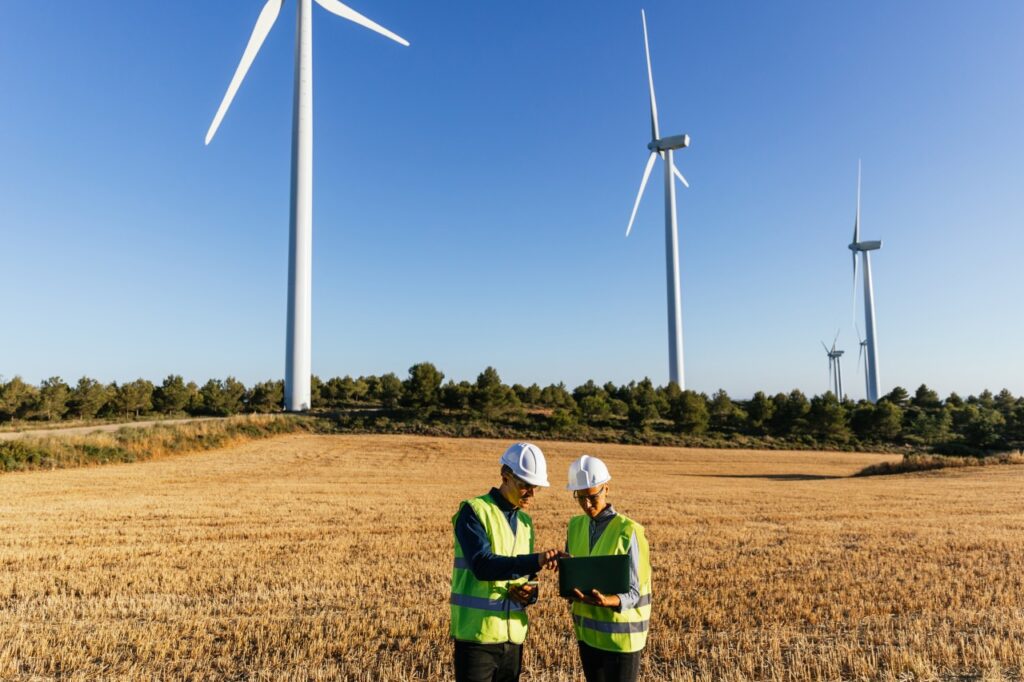Dieser Beitrag ist auch verfügbar auf:
Deutsch
AI, blockchain and the Internet of Things pose multiple challenges for energy production
AI systems such as ChatGPT require huge computing power for training – it is estimated that the large language models can consume up to 300 megawatt hours per training process. This is roughly equivalent to the annual electricity consumption of 30 households in the USA.
Blockchain networks like Bitcoin have even higher energy requirements: their annual consumption is estimated at over 120 terawatt hours – comparable to the energy requirements of smaller countries like Argentina.
The Internet of Things, which is expected to include 75 billion connected devices by 2025, is also a significant contributor to global energy consumption. The Internet of Things is a network of physical objects – so-called things – that are connected to each other through sensors, software and other technologies and exchange data over the Internet.
This includes devices such as smart home thermostats, wearables, connected vehicles or industrial machines. These objects can independently collect data, analyze it and perform actions, enabling the automation and optimization of processes. However, the constant data transfer, synchronization and processing of these devices requires immense resources and leads to hidden energy costs.
“Gray energy” – hidden energy consumption
In addition to the obvious power consumption, these technologies also consume “gray energy” that is often overlooked. The production of specialized chips and hardware for AI, blockchain, and IoT devices requires huge amounts of resources. Mining rare earths such as neodymium and dysprosium, which are needed for powerful magnets in IoT servers and sensors, is extremely energy-intensive and often involves environmentally damaging mining.
The operation of AI models can also have other unexpected consequences: The warming caused by large data centers has already affected the local climate in some regions, especially in colder countries where the waste heat from data centers is used to heat buildings. This effect, known as the “server-induced urban heat island,” could become even more pronounced in the future.
Blockchain technology, particularly the cryptocurrency bitcoin, is contributing to a global shortage of computer chips, in addition to the energy consumption required to create new blocks of data through a process referred to as proof-of-work. The demand for specialized chips used to create cryptocurrencies – known in the industry as minting – is so high that it is impacting the availability of semiconductors for other industries, such as automotive and consumer goods.
New solutions and innovations for an energy-efficient tomorrow
However, innovation can drive the sustainability of such technology. Researchers are already working on energy-efficient AI models that require less training data. A new technique called federated learning allows models to be trained directly using the computing power of end devices, reducing the need for centralized data centers. Using energy-efficient hardware such as edge TPUs can reduce power consumption by up to 30%. These are processors specifically designed for AI systems and are designed to consume minimal power.
Blockchain technologies are increasingly shifting from resource-intensive models such as proof-of-work to more environmentally friendly consensus mechanisms such as proof-of-stake (PoS), which can reduce energy consumption by up to 99.9%. Ethereum, the second largest blockchain network, has already successfully made this transition, reducing the network’s annual energy requirements by about 110 terawatt hours.
In the IoT sector, there is a shift towards “Green IoT”, which focuses on sustainable and energy-efficient design principles. These include solar-powered sensors that generate their own energy, as well as “energy harvesting” technologies that convert ambient energy such as vibrations and electromagnetic radiation into electricity.
By using intelligent management systems, the energy consumption of IoT devices can be reduced by up to 50%. Another example is “sleep mode” functions that allow devices to consume hardly any energy when idle and only become active when needed.
Future trends and how users can contribute to more efficient consumption in the digital age
Future trends such as quantum computing and the integration of artificial intelligence into blockchain protocols could drastically reduce energy consumption in the coming years, but also create new challenges. Quantum computers have the potential to solve certain cryptographic tasks that currently require immense computing power more efficiently.
However, quantum computers require extreme cooling, which in turn incurs high energy costs. Researchers are already working on superconducting materials that could function at higher temperatures to reduce these costs.
By combining technology and sustainable practices – such as the use of renewable energy, intelligent data processing and the integration of energy-efficient systems such as the ION Power Grid and its decentralized, globally connected energy infrastructure – we could enter an era where high tech and ecology go hand in hand.
The users of such technologies also play a crucial role in reducing energy consumption. One of the latest trends has been dubbed “digital decluttering”: regularly deleting unnecessary files, emails and apps on smartphones and cloud servers reduces the storage requirements in data centers, which in turn reduces energy consumption. Studies show that emails stored worldwide that are never read consume as much energy annually as 1 million households in Germany.






